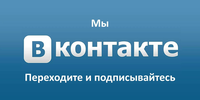Опубликован 37 выпуск журнала "Археологические вести"
В очередной номер журнала «Археологические вести» включены статьи, посвященные новейшим исследованиям в области археологии, истории и культуры. В серии работ, входящих в раздел «Новые открытия и исследования», рассматриваются отдельные категории археологических древностей от каменного века до XX в.; вводятся в научный оборот материалы поселения времен неолита и раннего железного века Голик в низовьях р. Луги (Ленинградская обл.); анализируется технология изготовления керамики цедмарской культуры IV тыс. до н. э. в Юго-Восточной Прибалтике, а также застройка городища Мирмекий в римский период. В специальный раздел включены статьи по актуальным проблемам археологии, в которых обобщается материал поселений со шнуровой керамикой на юго-западном побережье Финского залива; на основе естественнонаучных методов характеризуется рацион питания населения римского времени в Херсонесе Таврическом; рассматриваются находки, свидетельствующие о христианских (несторианских) традициях в Семиречье. Кроме того, в журнале представлены рецензии на новейшие публикации и работы по организации и истории науки. Среди авторов — ученые из различных центров России, Киргизии, Швеции и Японии.
The current issue of the Archaeological News includes articles devoted to the most recent researches in the sphere of archaeology, history and culture. The series of papers New discoveries and studies considers particular categories of archaeological antiquities dated from the Stone Age to the 20th century; materials from the Neolithic and early Iron Age site of Golik at the lower reaches of the Luga River (Leningrad Oblast) are published; the technology of pottery making of the Zedmar culture of the 4th millennium BC in the South-West Baltic region is analyzed, as well as the topography of buildings at the site of Myrmekion in the Roman period. A special section presents papers on the present-day problems of archaeology summarizing the evidence from settlements with corded ware at the South-Western littoral of the Gulf of Finland; on the basis of natural scientific methods, the diet type of the population of Tauric Chersonesos of the Roman time is characterized; the finds indicating Christian (Nestorian) traditions in the Semirechye (Zhetysu) area are discussed. In addition, in this yearbook, reviews of the most recent publications and works on the organization and history of science are presented. Among the present authors there are scholars from different centres in Russia, Kirghizia, Sweden and Japan.








